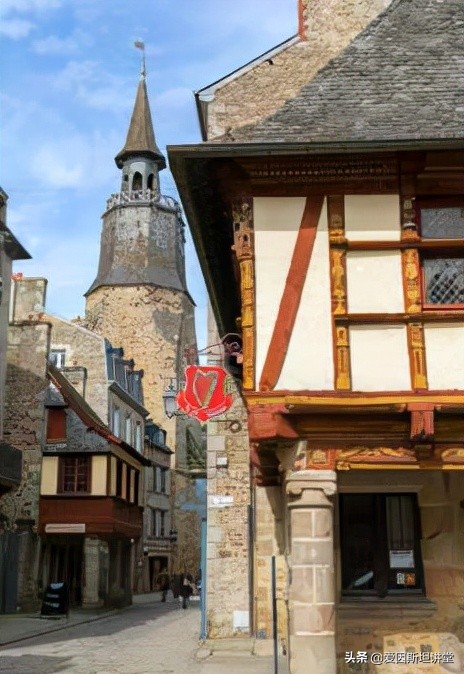Born in 1320 in Bertrand di Gecqueline, in a small town in Brittany, France, Mott-Broun, his life was not destined to be great. He was the eldest son of Robert Di Gecquelan of Sens and Jeanne DiMarmenez, and his mother did not like him because of his poor looks. He was short and ugly, but he knew how to fight. At the age of nine, Di Gecquelan gathered the other children in town together, played virtual battles and tournament games, and always played the main role. The life-changing events that changed him happened when he was 17 years old.
Nearby Rennes hosted a samurai horseback riding contest, and although he was not a nobleman, he found a horse and a helmet to cover his face before signing up for the race. It is said that he defeated all his opponents that day. This was not only a harbinger, but also coincided with the beginning of the Hundred Years' War, and Di Gecqueline was ready for battle.

In 1341, his first position was in service under Charles de Blois during the War of the Primonic Succession of Brittany, which the Breton family chose to support based on geography. For the next decade or so, Di Gecqueline led a group of adventurers who wandered around northern France, taking part in sieges and raids on British troops trying to advance south.
He rose to fame in Brittany and attracted the attention of The French Marshal Anur d'Ordelem. In 1354 , de Odelem made him a knight for capturing the English knight Sir Hugh Cavilli. It was shortly after this victory that Di Geclan caught the attention of Prince Charles. In 1356, when the English besieged the city of Rennes, Di Gecqueline led a small detachment to save the situation, and as a reward, the regent Charles gave him a salary of 200 livres per year.
The favor of the royal family did not stop there. Di Gecquetland was appointed captain of the French-Breton force stationed in Pontorson, responsible for countering the British offensive. He's done a great job of that because he's as talented as his English counterpart. However, he was physically weak and the probability of being captured was high. In fact, he was captured by the British twice in two years, but both times were freed through negotiations.
Bertrand Di Gecqueline, who had previously had almost nothing to lose, led the French army in the Hundred Years' War
In 1364, Di Gecquetland spent most of his time winning one victory after another in Normandy and Brittany, and the Prince ascended to the French throne as Charles V. King Charles at this time had the loyal commander lead the Freedom Corps and sent him to Spain to help Henry of Trastamala against the "cruel Peter" who sought the throne of Castile. After the Battle of Montière in 1369, Di Gecqueline used a ruse to help Henry meet with Peter, and when Henry recognized his opponent, he stabbed Peter in the head with a knife, thus ending the fight once and for all.
In the late 1660s, the conflict of the Hundred Years' War broke out again, and Di Gecqueline began the task of reconquering the territories occupied by the English. Both Poito and Saint-Tonine returned to French rule, and in 1370-1374 he drove the English to the northernmost tip of France. On 2 October 1370, Di Gecqueline was conferred by Charles V with the greatest honor of his life, the Commander-in-Chief of France. This position is one of the five official positions of the French royal family, so it is very coveted, and Di Gecquetlan cannot be taken lightly. In fact, due to his humble origins, he initially refused, but Charlie insisted on granting him the position.
As commander-in-chief, he led most of the French military operations and in 1372 reoccupied several towns in the Gienne region, which were part of the disputed Principality of Aquitaine. In 1373, he set out from Calais to follow the English forces of the Duke of Lancaster. His main strategy was to let Lancaster know he was there, but refused to fight. This approach proved to be very successful in hindsight. They kept track of the English soldiers until 6,000 of them were in a state of hunger and disease—to avoid angering Di Gecquelan's army, they did not occupy or plunder any towns along the way. The English finally returned home in April 1374.
In 1380, the keys to langernon's papal castle in Languedoc were placed on the coffin of Di gecland
In the 1670s, Di Gecqueline continued to win. By late 1372, the towns of Poitou, occupied by England, were in jeopardy. The last fort fell into French hands in February 1375. However, some trouble occurred in 1379. When Di Gecquelan learned that Charles had doubts about his loyalty, he offered to give up his position as commander-in-chief and retire to Spain. Charlie quickly understood and ordered him to fight in The Languedoc.
The Languedoc was Di Gecqueline's last expedition. There is no doubt that this warrior wanted to die on the battlefield, but unfortunately, that was not his end. On 13 July 1380, when his men besieged the English-controlled fortress, the commander died of illness. The commander who took over the siege was ultimately victorious, and he placed the key to the castle on The Coffin of DiGeclan—they would not have won without him.
From obscurity to French commander-in-chief, this "black dog of Broceriande" was buried in the cemetery of the French king of Saint-Denis, and the heart was sent to Dinant's Basilica of Saint-Sauveur, where his legend began. A key knight in the Hundred Years' War, Di Gecquelan is remembered by history for his fearless fighting spirit that helped France win many victories in the first half of the war.
(Source: "Hundred Years' War")